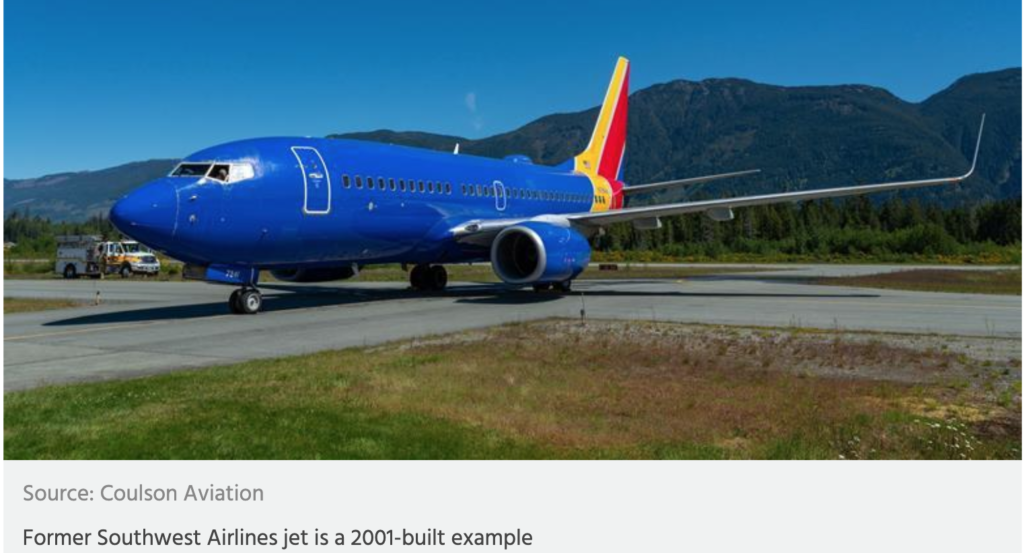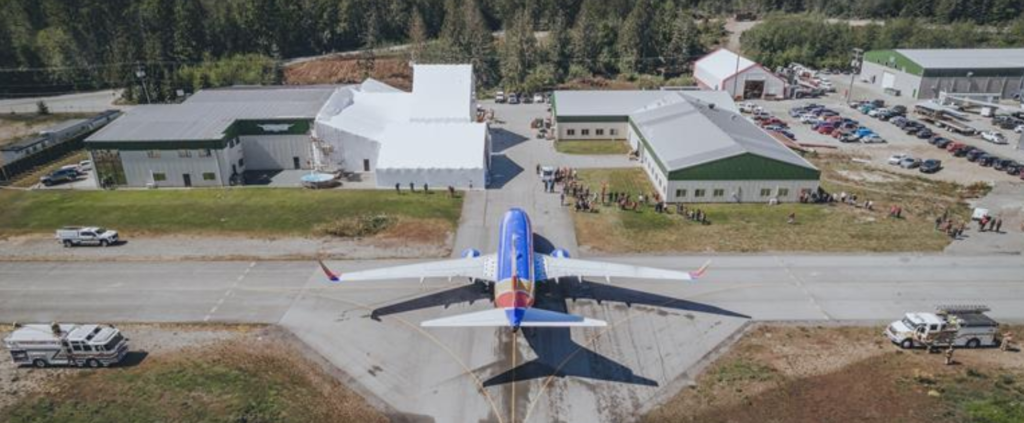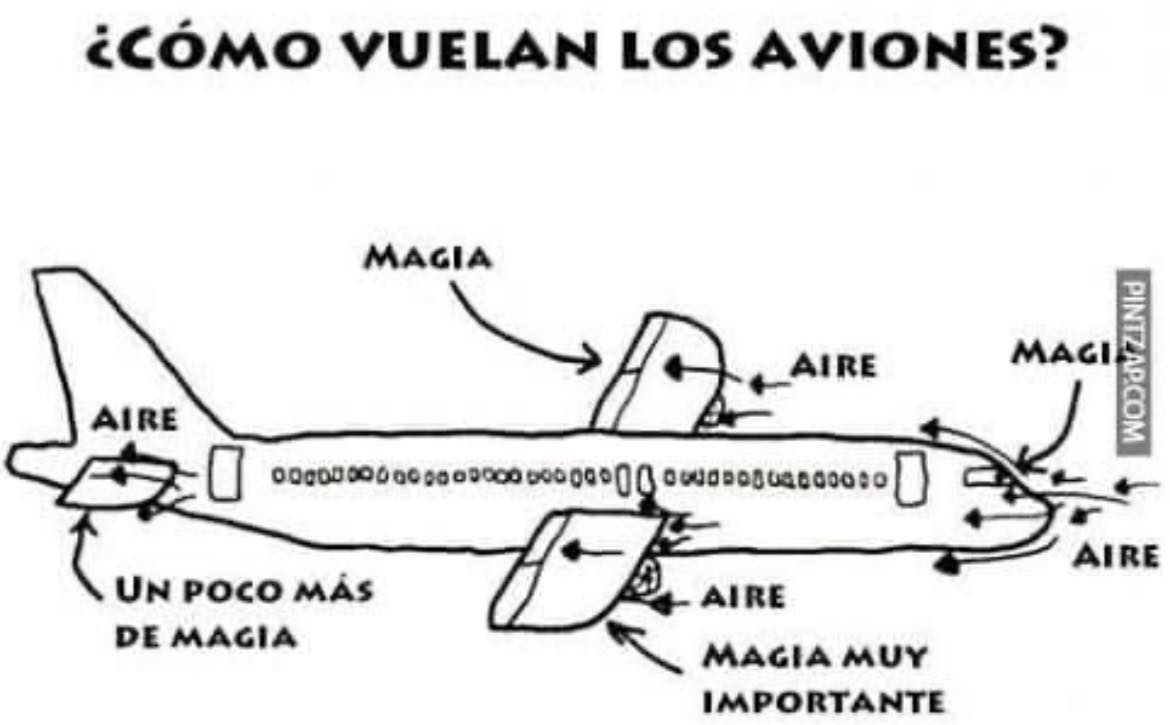Coulson Aviation has its first Boeing 737-700 from Southwest Airlines and will convert it at its base in Port Alberni, British Columbia. According to FlightGlobal, the latest arrival (N7841A) is the first of up to 10 aircraft that will be converted under Coulson’s Next Gen Fireliner program. Earlier Fireliner conversions used older 737-300s that were also sourced from Southwest.

The MSN28015 aircraft was operated by Denmark’s Maersk Air before it landed with Southwest in 2016. It’s accumulated over 60,000 flight hours.
Britt Coulson, chief operating officer of Coulson Aviation, says the Fireliner is the go-to large airtanker for foreign governments’ purchase because of its multi-role capability — it can transport passengers when not deployed on a fire. It will carry 19K liters (a bit over 5000 gallons).


WOW, it’s nearly new! 60,000 flight hours? Since 02/05/2016 (per FAA ID)? That’s an average of 20.5 flight hours/day! When did they have time to maintain this crate? I wonder how many pressurization cycles and landings it has on it. Does fatigue ever enter the equation when these aircraft are plucked out of retirement and modified for what would seem to be both a corrosive and high g-force utilization? At what point do we consider the airworthiness of the aircraft for its intended use? I mean, there’s a reason Southwest stopped using this aircraft! I think this industry needs to take a hard look at the inner workings of airworthiness as it relates to cost effectiveness as the delivery vehicles get ever larger. The word cowboy comes to mind…
The aircraft first went into service in 2001. 23.5 years ago.
Using your simple math that would give it an average daily flight time of 7.4 hours. Lots of time for maintenance.
I am sure that the VLAT DC-10 aircraft have much higher times.
What makes you think these aircraft are utilized in a corrosive situation?
High G-forces? Again, where did you come up with this?
I think you have a bone to pick- spreading false data will give you zero credibility.
Personally I think the platform could very well be the future of the industry.
Sorry, my mistake. I was using the FAA aircraft inquiry site that shows the A/W Date for N7841A as 02/05/2016. Still, most would consider this aircraft high time. So are you saying that retardant is a benign product with no corrosive effects? It’s made from monoammonium phosphate [MAP; NH4H2PO4] and diammonium phosphate [DAP; (NH4)2HPO4]. I honestly don’t know what that is, and really can’t even pronounce it…but I sure wouldn’t want it migrating long term into the inaccessible dark recesses of any aircraft I was flying. As to high g-loading, I haven’t read the accident reports of the C-130 whose wings folded during an aerial application of retardant some years back, but I’m guessing it didn’t just happen as the pilot maneuvered the aircraft in a 1g straight and level flight environment. I do have a bone to pick. If aerial firefighting is the best and most efficient way to initially fight fires, why can’t our government pop for some new aircraft? We are talking about a relatively small fleet of aircraft. I mean, if your house catches fire (heaven forbid) would you prefer a horse drawn water wagon roll up to fight the blaze? Our government spends money on all sorts of useless programs. My opinion…new fire attack aircraft would NOT be one (useless program). Now that’s a future I could get behind.
RD are you talking about last year’s retardant corrosion issues?
I’m saying that monoammonium phosphate is highly corrosive to aluminum. That is fact. That’s why they use Halon fire extinguishers on aircraft and not ABC type extinguishers. Seems reasonable that monoammonium phosphate would cause corrosion even when used with other ingredients for fire retardant. I’m not saying it can’t be neutralized and properly removed from aircraft surfaces and structure. My issue is with the age and cycles of the aircraft in the fleet. As a nation, we can do better, that’s all I’m saying. I’m suggesting that maybe contractors should be providing pilots and contract maintenance for a government owned fleet, that are not military relics or timed out civilian passenger aircraft that have been re-fitted for a second or third act as aerial fire fighters. Or, alternatively, maybe they are compensated in a manner that would allow for the purchase of new or newer aircraft. I’m thinking paradigm shift, outside the box thinking. I’m thinking about safety of crew members in an inherently dangerous industry. Maybe the thought held by some in the industry, but left unsaid. I don’t know.
Here ya go RD

Ok so u want them to buy a brand new aircraft for 30 million dollars which how many people can afford that also they go through an exhausting refurbished program that basically zero’s time on it this info is from my own research of this over the years how many times has the 3 dc10 vlat crashed with the exception of one c130 they haven’t lost another aircraft in 20 years
My total amateur question instantly is: am I correct in recalling that the converted 747’s could carry 3 or 4 times the load of liquid that these 737’s can carry? Is the difference because finance pressures need to keep part of the plane for possible 70 or so passengers? If so, I’d prefer government money paying enough extra dollars for full capacity for liquid loads. But I don’t claim to meaningful knowledge level behind my questions!!!
https://fireaviation.com/2022/05/04/747-supertanker-expected-to-be-fire-ready-before-the-end-of-this-year/
It was a business decision by Global Supertanker to pull the plug on their 747 for a number of reasons, including the cost of maintenance and operation. It was a good tool for some situations, but size doesn’t always matter the most with airtankers.